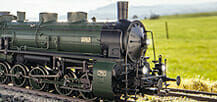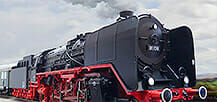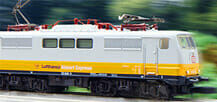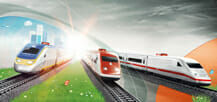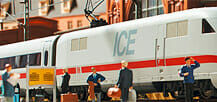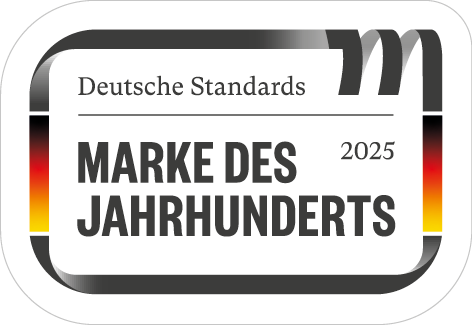Pair of Passenger Cars.
Prototype: Type BC3yge, 2nd/3rd class, and type C3yge, 3rd class, rebuild cars. Permanently coupled double cars. Version from the class reform of 1955.
Most Important Facts
| Article No. | 43172 |
|---|---|
| Gauge / Design type | H0 / 1:87 |
| Era | III |
| Kind | Passenger Cars |
Check with your local dealer Find Dealer
Highlights
- Prototypical "Little Pairs".
- Version from 1953/54: 3rd class seating and a "bottle green" paint scheme.
-
Product description
Model: The cars have plug-in couplers in NEM coupler pockets between the car halves. Length over the buffers 30.5 cm / 12".
DC wheel set 4 x 700580, 2 x 406240.
The models under item numbers 43172, 43182 and 43192 represent the typical rebuild car combinations. The 37074 fast tank locomotive is an ideal choice for an early Era III passenger train with these cars.
Find more Märklin explanation videos on our YouTube Channel
Spare parts for our articles can be found here in our spare parts search.
One-time series.
-
Publications
- Product programme 2007/2008 - Summer New Items 2007
-
Prototype information
Rebuild Program. At the start of the Fifties, the new DB had more than 20,000 passenger cars from the former provincial railroads, and these cars were of limited use only due to wear and tear or war damage. The rebuilding of German under the Federal Republic demanded cars for commuter service, but the finances were lacking for such an extensive effort, and designs were not ready for new commuter cars. The solution was an extensive rebuilding program, which was used starting in 1953 to produce standard design, modern, reasonably priced cars from the different provincial railroad car types. The three-axle frames were standardized and had new, flat wall bodies built on them with three different interiors: 3rd class, 2nd and 3rd class, as well as 3rd class with a baggage area. The cars were always assembled in pairs and wired symmetrically. In this way, they corresponded to the length of the new cars being built with a length of 26.4 meters / 86 feet 7-3/8 inches. Six thousand five hundred individual cars were built in 5 years, and they made up passenger trains and fast passenger trains ("Eilzüge") in all of West Germany until the beginning of the Eighties.
